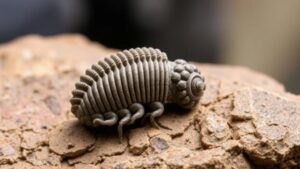Dinosaur Egg Hunts: Finding Fossilized Clutches in Sedimentary Rock
Dinosaur Egg Hunts: Finding Fossilized Clutches in Sedimentary Rock
For rockhounds and mineral collectors, the thrill of discovering fossils can be immense, but few finds are as captivating as dinosaur eggs. These fossilized clutches provide extraordinary insights into the life and behavior of dinosaurs. This article will explore the methods and locations for hunting dinosaur eggs, the significance of these fossils, and essential tips and techniques for collectors looking to enhance their finds.
The Significance of Dinosaur Eggs
Dinosaur eggs are of great interest to paleontologists and amateurs alike for multiple reasons:
- Insight into Reproductive Behavior: The study of nesting sites can reveal information about how dinosaurs cared for their young.
- Biodiversity Indicators: The types of eggs found can indicate the variety of species that once inhabited an area.
- Environmental Conditions: Eggs can provide clues about the environmental conditions during the time of the dinosaurs.
For example, nests from the Late Cretaceous period, approximately 75-100 million years ago, have been discovered in places like Montana and China, yielding crucial information on sauropod and theropod reproductive strategies.
Key Locations for Finding Dinosaur Eggs
The most fruitful locations typically feature sedimentary rock formations, which are excellent for preserving fossils. Here are some renowned areas:
- Mongolia: The Nemegt Basin is known for rich Cretaceous deposits filled with dinosaur egg fossils.
- North America: The Two Medicine Formation in Montana has yielded numerous dinosaur egg finds.
- China: The Lufeng Formation is another prolific site for both sauropod and theropod eggs.
In particular, the discovery of over 200 fossilized eggs in Argentina has sparked increased interest in the field of paleontology, drawing tourists and researchers alike.
Understanding Dinosaur Egg Structures
Dinosaur eggs vary in size and structure. For example, some theropod eggs can reach up to 18 cm in length. The shapes include oval, spherical, and elongated versions, akin to the size and morphology of modern bird eggs. When identifying these eggs, note the following:
- Surface Texture: Some eggs possess a smooth finish, while others display a rough, granulated texture.
- Coloration: Fossilized eggs can range from shades of brown, gray, and even white, depending on mineral content.
- Shell Thickness: The thickness can vary based on the species and environmental factors during the eggs formation.
These characteristics can help collectors differentiate between types of dinosaur eggs and other fossilized materials.
Techniques for Collecting Dinosaur Eggs
Successful dinosaur egg hunting requires both practical techniques and a good understanding of geology. Here are some tips to get you started:
- Research and Plan: Understand where dinosaur eggs are likely to be found. Use geological maps that show sedimentary formations likely to contain fossil records.
- Use Proper Tools: Equip yourself with tools such as rock hammers, chisels, and safety goggles to safely excavate finds without damaging them.
- Respect Regulations: Always adhere to local laws regarding fossil collection, as many locations may have restrictions to protect heritage sites.
Its also advisable to use GPS technology to mark significant locations, allowing for repeat visits and further exploration.
Preserving Your Discoveries
Once youve successfully located and collected a dinosaur egg, proper preservation is essential to maintain its integrity:
- Cleaning: Use a soft brush and water to remove dirt carefully; avoid harsh chemicals.
- Storage: Store in a padded box to prevent damage. Keep in a climate-controlled environment to avoid extreme temperatures and humidity.
- Documentation: Record the location, date, and other relevant details alongside the fossil for future reference.
Conclusion
Finding and collecting dinosaur eggs can be one of the most rewarding pursuits in paleontology. By understanding the significance of these fossils, knowing the best locations and techniques for collection, and ensuring proper preservation, rockhounds and mineral collectors can enjoy a fulfilling and educational experience. It’s not just about the find; it’s about contributing to our understanding of prehistoric life and sharing that knowledge with others.



